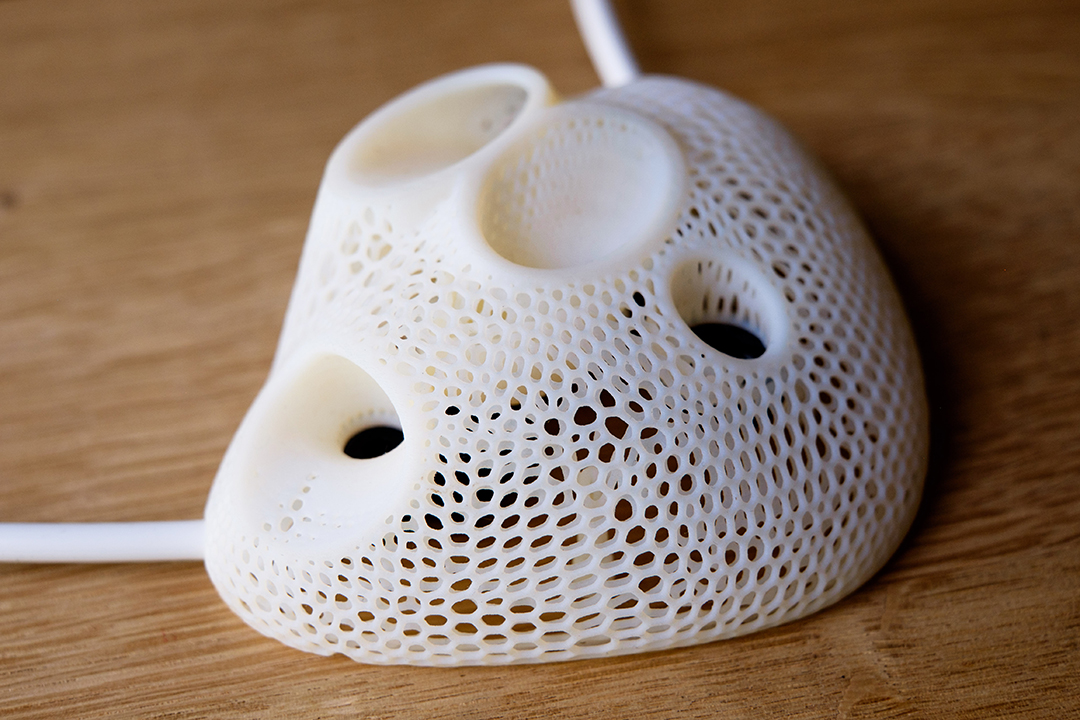Design
Our field of design goes by many names: parametric design, generative design, procedural design, algorithmic design or computational design. All of these terms apply to our workflow to some extent, but at the very core of our work we craft algorithms to produce shapes. This means we don't manually place the lines and polygons that make up our designs, like traditional Computer Aided Design (CAD), but rather we build the processes that do. This allows us to create forms that would be impossible to make by hand. The processes we make have parallels with those found in nature, this is often referred to as biomimicry or bio-inspired design. The points in our simulations grow, move, break and connect.
"...at the very core of our work we craft algorithms to produce shapes."

Approach
The organic and futuristic look of our designs is inherent to our way of working and leverages the cutting-edge of computation and digital manufacturing. Our procedural design approach results in new aesthetic possibilities where complexity is no longer restricted by time; With complexity no longer a limiting factor and minimalism an option rather than a necessity, it also enables us to work in a massive range of scales. Our workflow naturally combines working on micron level textures with controlling the overall silhouette of projects at huge scale.
"...new aesthetic possibilities where complexity is no longer restricted by time..."
Our algorithms offer the opportunity to directly base our designs on input data. Whether these are sensor data, simulation data or data from real time interaction, our geometries will adapt.

Iterate
We all know iteration is key in design. By designing the process rather than the object each iteration doesn't just output one but a whole range of options to pick from. This rapid iteration and huge variation is an extremely powerful tool for prototyping. Using advancements in digital manufacturing, this level of variation can even be part of the final consumer-facing offering, with mass-customisation built into the design process.
Digital Cratsmanship
In our eyes, digital craftsmanship is essential to leveraging the opportunities of 21st century manufacturing. Algorithmic design allows for single material products with variable physical properties which in turn enables circular economies. On top of that digital manufacturing enables localised production.